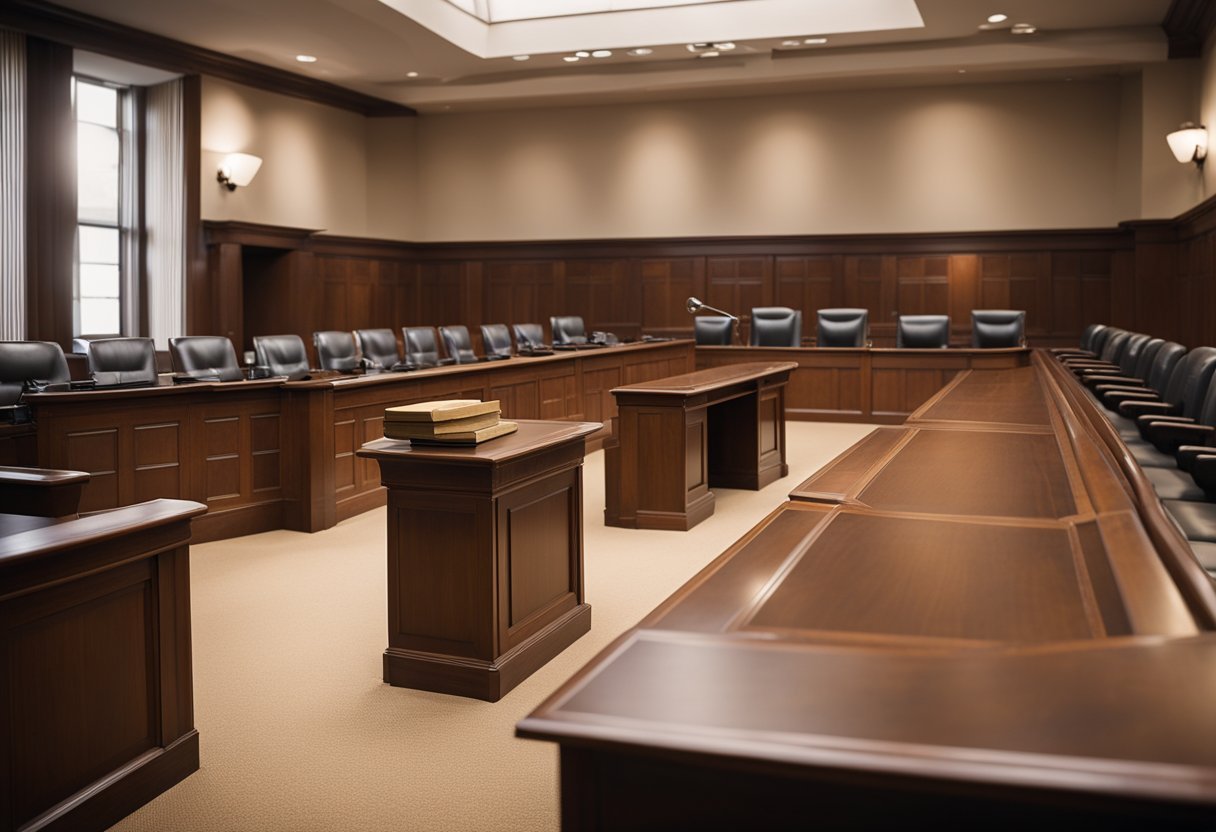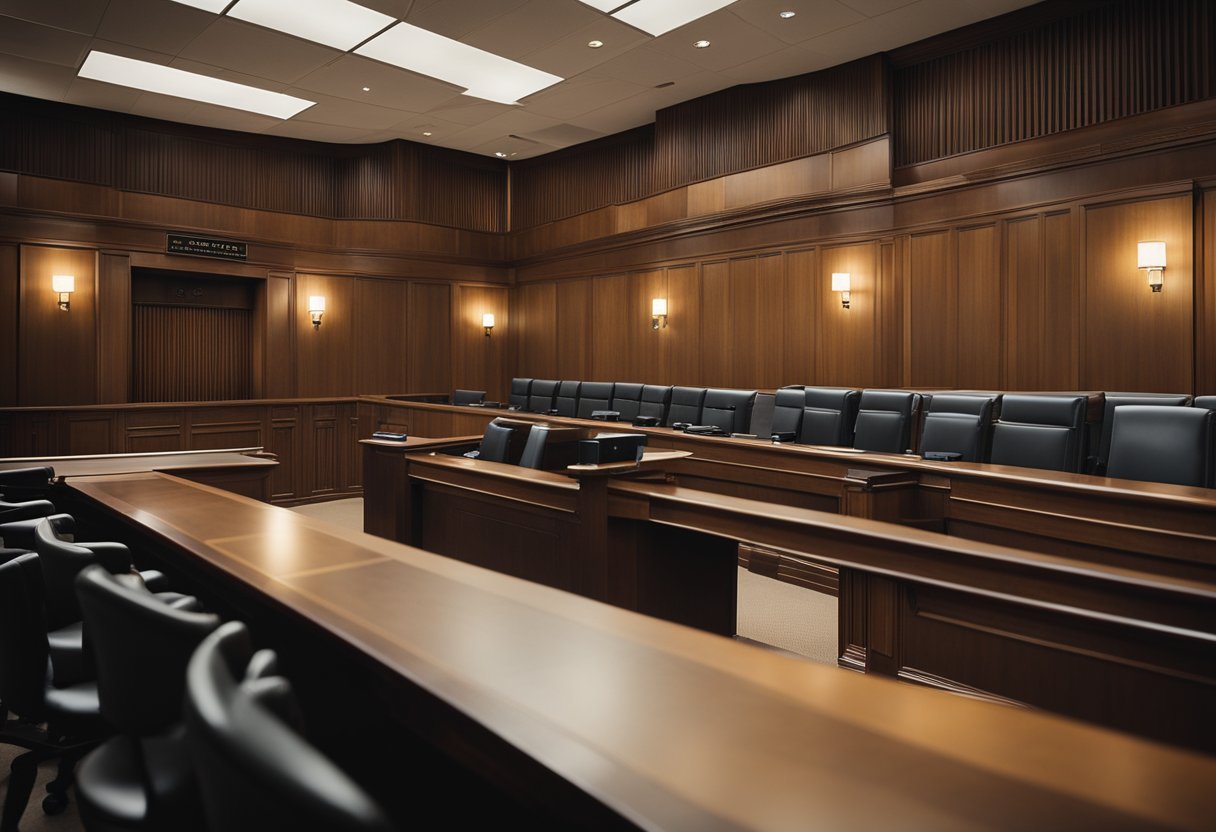The federal criminal justice system is a complex structure designed to administer justice across the United States. It encompasses various interconnected components that work together to uphold the law and protect the rights of individuals. Understanding these key components is essential for anyone seeking to grasp how the federal criminal process operates.

In this blog post, the focus will be on seven critical parts of the federal criminal justice system, including law enforcement agencies, the court process, and corrections. Each of these components plays a significant role in ensuring that justice is served and that the system functions effectively. Readers will gain insight into how these elements interact and the responsibilities assigned to each.
Armed with this knowledge, individuals can better appreciate the intricacies of federal law enforcement and the judicial process. By exploring the key components, readers will uncover the foundational aspects that contribute to maintaining public safety and justice on a national level.
The Framework of Federal Criminal Justice

The federal criminal justice system operates through a structured framework that includes various law enforcement agencies, federal courts, and correctional institutions. Each component plays a vital role in maintaining justice and order within society.
Law Enforcement Agencies
Law enforcement at the federal level comprises several specialized agencies, each with distinct responsibilities. The Federal Bureau of Investigation (FBI) investigates and enforces federal laws, focusing on terrorism, organized crime, and cybercrime. The Drug Enforcement Administration (DEA) is tasked with combating drug trafficking and abuse.
Additionally, the Bureau of Alcohol, Tobacco, Firearms and Explosives (ATF) regulates these substances, targeting illegal trafficking and enforcement of federal firearms laws. Each agency collaborates with state and local law enforcement to investigate crimes, gather evidence, and carry out arrests, ensuring federal laws are upheld across jurisdictions.
Federal Courts
Federal courts operate under a hierarchical system that includes district courts, courts of appeals, and the Supreme Court. U.S. District Courts serve as trial courts for federal cases, where both criminal and civil matters are adjudicated.
Cases may then be appealed to the U.S. Courts of Appeals, which review decisions made by district courts for errors in the application of law. The Supreme Court serves as the highest court, addressing crucial constitutional issues and ensuring uniform interpretation of federal law, shaping legal precedents that guide future cases.
Correctional Institutions
Correctional institutions at the federal level include various types of facilities, such as prisons, halfway houses, and supervised release programs. The Federal Bureau of Prisons (BOP) oversees the administration of federal prisons, which house offenders convicted of federal crimes.
These institutions focus on rehabilitation and reintegration into society. Programs are designed to provide educational opportunities, vocational training, and mental health services. The goal is to reduce recidivism and promote lawful behavior after serving time, ensuring that the justice system not only punishes but also rehabilitates offenders.
Key Processes and Principles

The federal criminal justice system involves several key processes and principles that ensure the enforcement of laws and fair treatment of individuals. Understanding these components is essential for grasping how the system operates and the rights of those involved.
Investigation and Arrest Procedures
Federal investigations typically begin with law enforcement agencies collecting evidence about a suspected crime. This phase involves the gathering of information through various means, such as surveillance, interviews, and forensics.
Once sufficient evidence is compiled, federal agents may seek an arrest warrant from a judge. This warrant legally authorizes them to apprehend the suspect. Arrest procedures must adhere to constitutional rights, including the right to remain silent and the right to legal counsel.
Additionally, in cases involving serious crimes, a grand jury may be convened to review evidence and determine whether charges should be filed. This process serves as a safeguard against arbitrary prosecutions.
Prosecution and Pretrial Services
After an arrest, the case transitions to the prosecution phase. The U.S. Attorney’s Office is responsible for charging the defendant, often utilizing federal laws and guidelines.
Pretrial services play a critical role during this phase. They assess the defendant’s situation, including flight risk and potential danger to the community. Based on this evaluation, recommendations may be made regarding bail or pretrial detention.
Negotiations for plea bargains can occur, where defendants may plead guilty in exchange for reduced charges or sentences. This approach helps to expedite the legal process and alleviate court congestion while ensuring that justice is served.
Sentencing and Appeals
If a defendant is convicted, the case moves to the sentencing phase. A judge determines the appropriate punishment based on federal sentencing guidelines, which consider factors like the nature of the crime and the defendant’s prior record.
Sentences can include imprisonment, fines, and probation. The judge’s discretion is crucial, as it impacts the severity of the outcome. Victims may also have the opportunity to provide impact statements during sentencing.
Post-sentencing, defendants have the right to appeal their conviction or sentence. Appeals are often based on claims of legal errors that could have affected the trial’s outcome. A higher court reviews these claims, potentially leading to a new trial or sentence modification.
Reentry and Supervision
After serving a sentence, individuals enter the reentry phase, where they transition back into society. Federal programs often aim to facilitate this process, offering support such as job training and housing assistance.
Supervision may continue through probation or parole, designed to monitor behavior and help reintegrate the individual. Conditions are set to ensure compliance with the law but can vary widely based on the specifics of the case.
The goal of reentry and supervision is to reduce recidivism, ultimately benefiting both the individual and the community. Adhering to these principles helps maintain public safety while providing the support necessary for successful reintegration.






